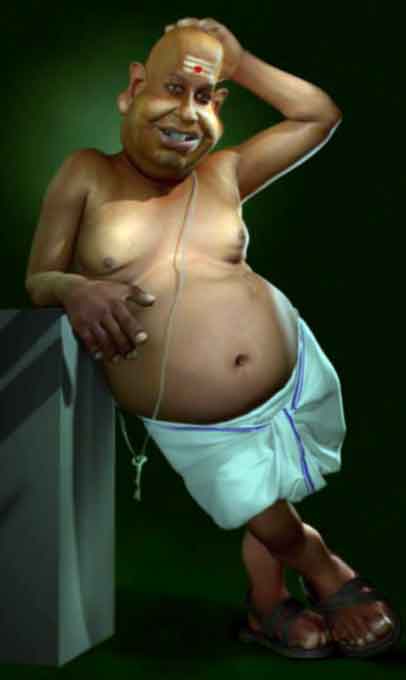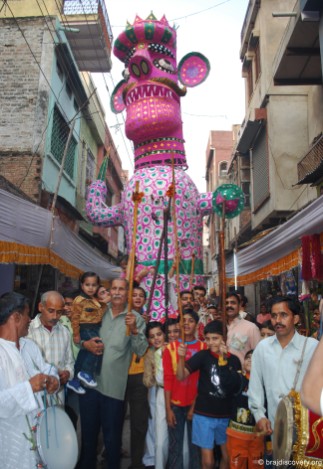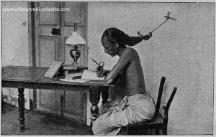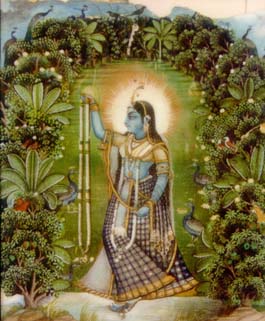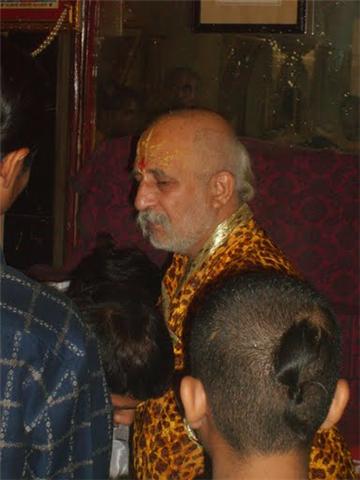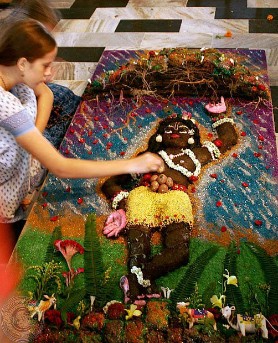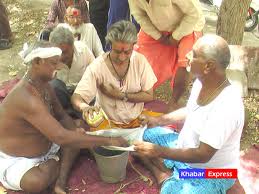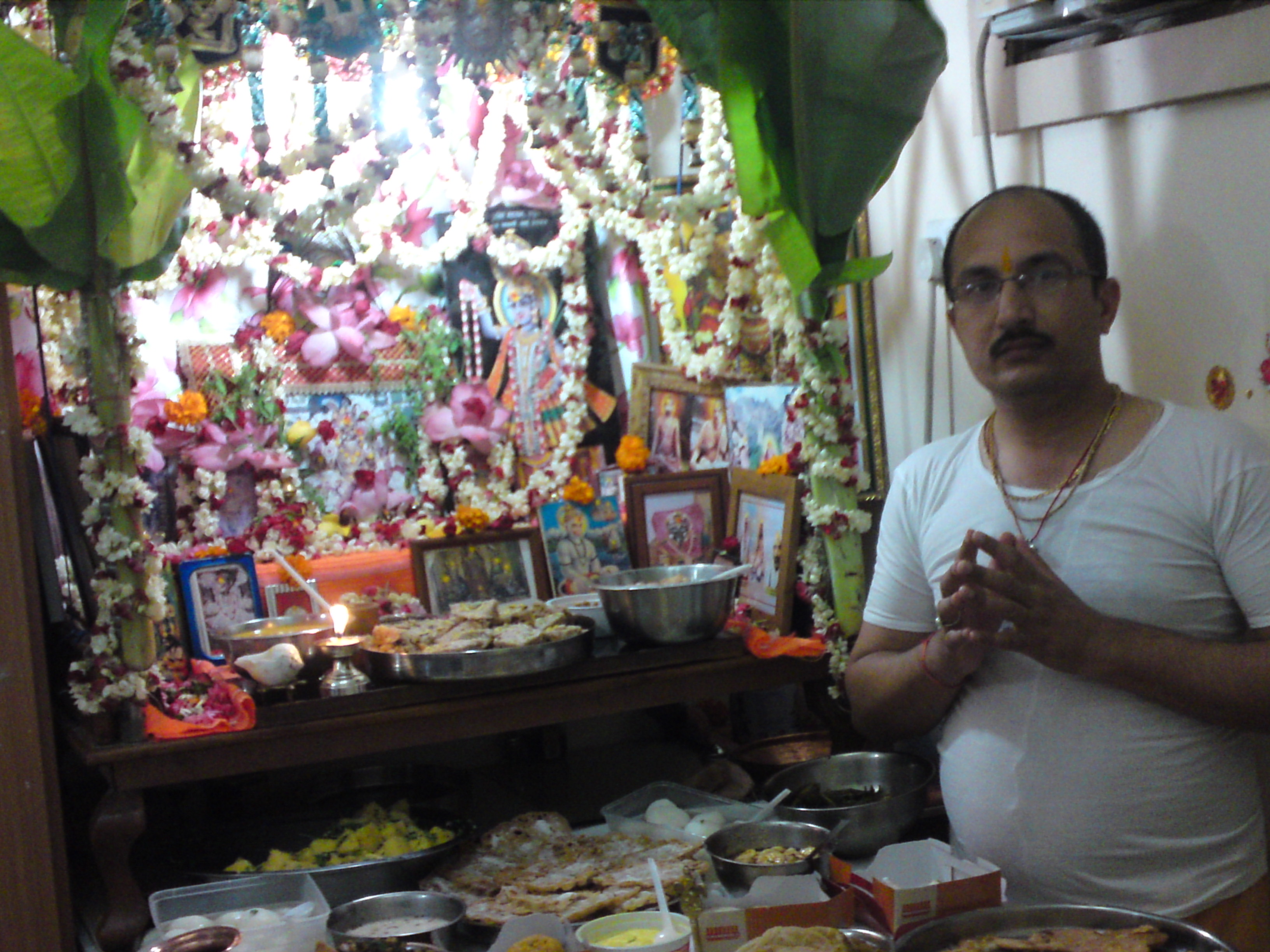
THE PICTURE OF SHRI GOPAL JI SEWA IN DUBAI(GOPAL ASHRAM)
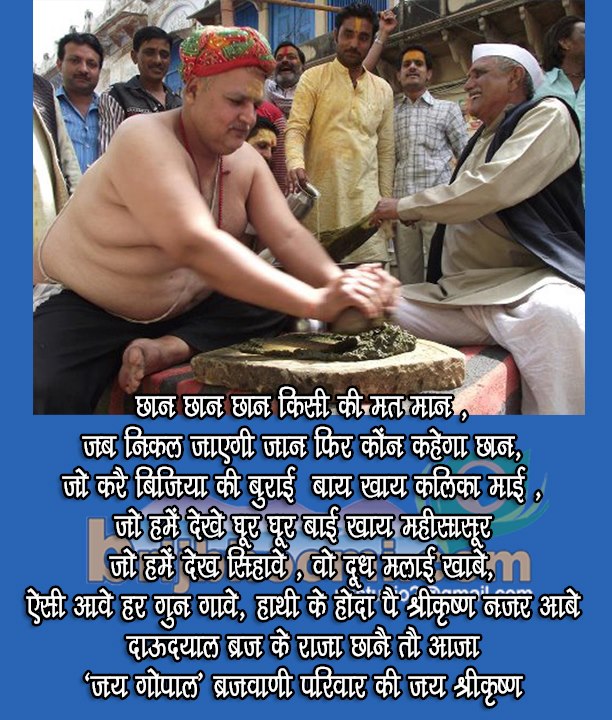
Chaturvedi
A Chaturvedi also (somewhat derogatively) known as Chaubey (from Sanskrit caturvedin from catur "four" and vedin "knowing", also caturvidya) is one who is a master of all four Vedas.
It is also an Indian surname.
Ontology
A theory suggests that Indian surnames were traditionally derived or closely linked to professions at that time.
While Brahmins of all hues were considered to be learned men/priests/ educators, within Brahmins, those with the knowledge of 2 vedas were called Dwivedi, a combination of Dwi(two in sanskrit)+vedi(from vedas, the ancient holy Hindu book). Similarly there are Trivedis (3 vedas) and finally the Chaturvedis (all 4 vedas).
A Chaturvedi, by virtue of his knowledge of the 4 holy vedas, was considered to be the most learned of all brahmins, and hence enjoyed a very high social status in ancient times. These high-priests were called on for large to very large religious rituals, apart from the daily rituals in the Krishna birthplace temple of Mathura,Uttar Pradesh.
************************************************************************************************************************
Originating from Mathura, Western Uttar Pradesh (Near Delhi), the Chaturvedi Community is small. It is said that there are about 4000 major families of Chaturvedi existing today (un-verified). Mathura is believed to be the birthplace of Lord Krishna's and the association of the community with the deity is very strong.
A major categorisation within the Chaturvedi clan is the Meethe-Kadwe (or Sweet-Sour) divide, which is believed to be a result of the Medieval Mughal Indian history.
As per custom and stories passed on from generations, Mathura was the center of congregations of Hindu pilgrims from around the country, which did not go down well with the Mughal Muslim rulers- Shahjahan and Auranzeb, who took steps to repress the religious fervour around Braj Mandal (or the country of Lord Krishna). The Mughal emperor Auranzeb, a devout Muslim ruler and de-facto sultan of India, re-introduced the Jaziya tax, and made sure it was specifically enforced on the Hindu priests of Mathura, usually Chaturvedis. This is a tax that all non-muslims have to pay in order to continue with their non-muslim religious beliefs and lifestyles (example a Chaturvedi could retain their traditional thread -Janeu and brahminical ponytail - Choti by paying the tax), else they are faced with the option of conversion or death.
Now, a section of Chaturvedis chose to make peace with the mighty Mughal empire and continue with the ancestral priesthood of the Mathura Krishna temple. They chose to pay the tax and continued living in Mathura for generations. Another section was more rebellious and refused to accept overlordship of an invader. These sections chose to rebel in the face of a perceived unjust and foreign establishment. In the face of an organised onslaught by Auranzeb's forces to crush the rebellion, the rebels migrated and took shelter in the difficult hinterlands along river Chambal, where they settled in small hamlets (now villages like Jahangirpur, Holipura, Chandarpur, Mainpuri and many more in the Mathura-Agra belt). They continued their struggle against the Mughals, and therefore called the Khatta or "Sour" Chaturvedi, i.e. Chaturvedis who turned rebels.
Many times, the Mughals tried to attack these hamlets, either for subjugation or loot, and the rebels used to defend themselves by gurrella warfare. The attacks were pretty routine during marriage ceremonies, when the Mughals used to raid marriage parties for loot and to kidnap the Kafir women and bride, hence armed struggle was routine at such ceremonies. To this day, Chaturvedis have their marriage ceremonies late in the night, a custom at difference with other Brahmin groups. Also interesting is the custom called "mughal pasaarna" wherein a human figure with a chalk is made on the ground over which the marriage dinner is held. The chalk figure represents the quintessential mughal marauders who'd have to be braved and killed before the marriage dinner would be held over their bodies!! It's now just a mute custom and a reminder of the unfortunate large-scale organised violence that left the clan hugely scattered across the Mathura-Agra belt.
It is interesting to note that a similar classification exists in other sections of the populace like Marathas, who were engaged in similar gurrella warfare against the torturing Mughals.
Customs and traditions
The community is believed to encourage and practice a moderately ascetic or spartan ways of life. Chaturvedies are known to be largely vegetarians and look down uplon onion, garlic, eggs or meat.
Janeu ( also variedly called as Yagyopavit Sanskar or Theared ceremonies) is an important event (one among 16 sanskars) in the life of a Chaturvedi (like most other Brahmin sects in India).
Many Chaturvedi locals from Mathura claim that Birbal, a known courtier of Mughal emperor Akbar, was a Chaturvedi. Although none of have ever been proven, or attempted to be proven, there are many such interesting claims in the stories of local Chaturvedi community in Mathura.
Chaturvedi's have traditionally been intermarrying only from the community, but keeping with the times, today's generation has started marrying outside as well, despite staunch opposition from the older generation.
